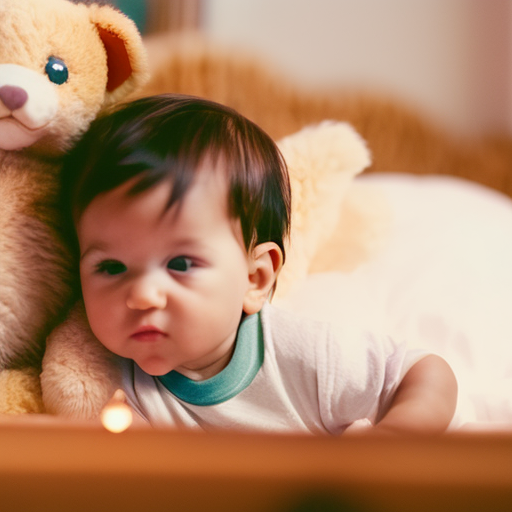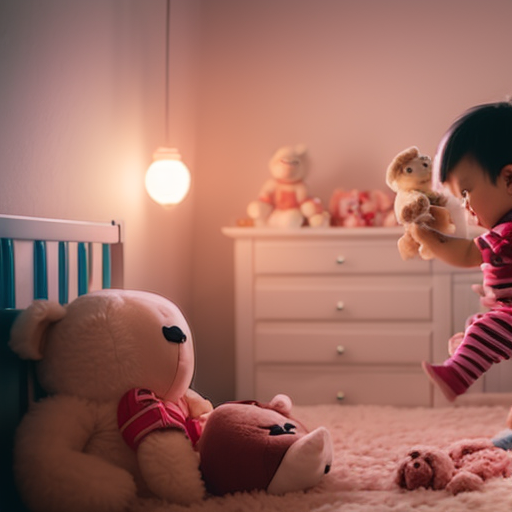"Cherishing Little Steps - A Haven for Baby and Family Journeys"
Transitioning to Toddler Beds
You never thought the day would come so soon, but here you are, contemplating the transition to toddler beds. It’s a bittersweet moment, filled with excitement and uncertainty.
You want your little one to feel safe and comfortable, but you also worry about the challenges that may arise.
Well, fear not, because in this discussion, we will explore the signs of readiness, guide you in choosing the right toddler bed, provide effective transitioning strategies, help you create a bedtime routine, and offer solutions for any challenges or setbacks that may come your way.
So, get ready to embark on this new chapter of your parenting journey, because we’ve got you covered.
Key Takeaways
- Signs of readiness for transitioning to a toddler bed include successful potty training during the day, few accidents during potty training, sleep regression with frequent disruptions, waking up multiple times during the night, and difficulty falling back asleep.
- When choosing a toddler bed, consider convertible cribs for long-term value and flexibility, low-profile beds for easier access and safety, toddler beds with built-in guardrails for extra security, and themed beds for a fun and exciting bedtime experience.
- Transitioning strategies include establishing a consistent bedtime routine, gradually reducing your presence during bedtime, using positive reinforcement like a sticker chart, and introducing the new bed during the daytime while providing reassurance and comfort with a transitional object.
- Creating a bedtime routine involves setting a consistent bedtime for better sleep regulation, creating a calming environment with dim lights and soft music, establishing a predictable routine with activities like brushing teeth and reading a book, addressing bedtime resistance calmly and gently, and providing comfort items like a favorite stuffed animal or blanket.
Signs of Readiness
If you’re wondering whether your child is ready to transition to a toddler bed, there are several signs to look out for. One important sign is potty training readiness. If your child has successfully mastered the art of using the potty during the day and has few accidents, it may be a good indication that they’re ready for the transition. This shows that they’re developing independence and can handle the responsibility of getting out of bed to use the restroom during the night if needed.
Another sign to consider is sleep regression. If your child has been experiencing frequent disruptions in their sleep patterns, such as waking up multiple times during the night or having difficulty falling back asleep, it may be a sign that they’re feeling confined in their crib and are ready for a bigger sleeping space. Transitioning to a toddler bed can provide them with the freedom to move around more comfortably and may help improve their sleep quality.
Keep in mind that every child is different, and readiness for a toddler bed may vary. It’s important to observe your child’s behavior and assess their readiness based on their individual development and needs. If they’re showing signs of potty training readiness and experiencing sleep regression, it may be a good time to consider making the transition to a toddler bed.
Remember to be patient and supportive throughout the process, providing reassurance and comfort as your child adjusts to their new sleeping arrangement.
Choosing the Right Toddler Bed

Now that you have assessed your child’s readiness for a toddler bed, let’s explore how to choose the right one for them. When it comes to bedtime safety, finding the perfect toddler bed is crucial. Here are some options to consider:
-
Convertible cribs: These versatile beds can transition from a crib to a toddler bed, and even to a full-size bed as your child grows. They offer long-term value and flexibility.
-
Low-profile beds: These beds are closer to the ground, making it easier for your little one to get in and out safely. They provide a sense of independence while still keeping your child secure.
-
Toddler beds with rails: These beds come with built-in guardrails that prevent your child from rolling out during the night. They offer extra security and peace of mind.
-
Themed beds: For those children who love imaginative play, themed beds can make bedtime more fun and exciting. From race cars to princess castles, these beds can turn bedtime into an adventure.
When choosing a toddler bed, keep in mind your child’s preferences and safety needs. Ensure that the bed is sturdy, with no sharp edges or loose parts. Consider the size of the bed, ensuring it fits well in your child’s room. Remember, finding the right bed is an important step in creating a safe and cozy sleep environment for your little one.
Transitioning Strategies
To ease the transition from a crib to a toddler bed, it’s important to have a plan in place and implement effective strategies. Sleep training techniques and managing separation anxiety are two key areas to focus on during this transition.
When it comes to sleep training techniques, consistency is key. Establish a bedtime routine that includes calming activities such as reading a book or singing a lullaby. Stick to a set bedtime and wake-up time to create a sense of predictability for your child. Gradually reduce your presence in the room during bedtime, starting with sitting next to the bed and then gradually moving further away. You can also use positive reinforcement, such as a sticker chart, to reward your child for staying in bed throughout the night.
Managing separation anxiety is another important aspect of transitioning to a toddler bed. Start by introducing the new bed during the daytime, allowing your child to explore and become familiar with it. Offer reassurance and comfort during this time, letting them know that their crib is being replaced with a big kid bed. Consider using a transitional object, like a favorite stuffed animal or blanket, to provide comfort and security during the night.
Creating a Bedtime Routine

As you establish a bedtime routine for your toddler, it’s important to create a sense of consistency and comfort to help them transition smoothly to their new bed. Consistency provides a sense of security and stability, while comfort helps your child relax and feel safe in their sleeping environment.
Here are some tips to help you establish a successful bedtime routine:
-
Set a consistent bedtime: Choose a time that works best for your child and stick to it. A regular bedtime helps regulate their internal clock and promotes better sleep.
-
Create a calming environment: Dim the lights, play soft music, or use a white noise machine to create a peaceful atmosphere. This signals to your toddler that it’s time to wind down and prepare for sleep.
-
Establish a predictable routine: Follow a consistent sequence of activities before bedtime, such as brushing teeth, reading a book, or singing a lullaby. This routine helps your child understand that sleep is approaching.
-
Address bedtime resistance: If your child resists bedtime, address their concerns calmly and gently. Offer reassurance, establish clear boundaries, and provide comfort items like a favorite stuffed animal or blanket.
Addressing Challenges and Setbacks

If you encounter challenges or setbacks during the transition to a toddler bed, there are strategies you can implement to address them effectively.
Dealing with resistance is a common issue that many parents face. Your child might resist the new bed because they’re used to the comfort and familiarity of their crib. In this case, it’s important to remain patient and understanding. Talk to your toddler about the transition, explaining why it’s necessary and emphasizing the positive aspects of having a big kid bed. You can also involve them in the process of choosing their new bed or bedding, making them feel more excited about the change.
Maintaining consistency is key during this transition. Stick to the new bedtime routine that you established when introducing the toddler bed. This will provide a sense of security and help your child adjust more easily. Consistency also applies to the rules and boundaries you set around bedtime. If your child tries to get out of bed or refuses to stay in their new bed, calmly and firmly remind them of the expectations. Avoid giving in to their requests to go back to the crib or sleep in your bed, as this will only prolong the transition.
Frequently Asked Questions
How Long Does the Transition From a Crib to a Toddler Bed Usually Take?
The transition from a crib to a toddler bed usually takes time and patience. You can make the transition easier by creating a familiar sleep environment and watching for signs that your toddler is ready, like climbing out of the crib.
Should I Let My Toddler Choose Their Own Bedding and Pillows for Their New Bed?
You might be worried about the mess or indecisiveness, but letting your toddler choose their own bedding and pillows can actually make the transition more exciting and comforting for them. It gives them a sense of ownership and control over their new bed.
How Can I Prevent My Toddler From Falling Out of Their New Bed During the Night?
To prevent your toddler from falling out of their new bed, make sure to use bed rails or place the mattress on the floor. Establish a consistent bedtime routine and reassure them with love and comfort.
Is It Necessary to Remove All Crib-Related Items From the Room During the Transition?
During the transition to toddler beds, it is important to remove all crib-related items from the room for safety reasons. Taking this precaution will help minimize the risk of accidents and create a safe sleeping environment for your little one.
What Should I Do if My Toddler Refuses to Sleep in Their New Bed?
If your toddler refuses to sleep in their new bed, it can be frustrating. However, don’t worry! You can try adjusting their bedtime routine, offering reassurance, and being consistent. Remember, this is a normal part of the transition process.
Conclusion
Now that you have all the information and strategies for transitioning to a toddler bed, you’re ready to embark on this exciting journey with your little one.
Remember, it may not always be smooth sailing, but with patience and consistency, you can overcome any challenges that come your way.
Trust your instincts, create a soothing bedtime routine, and soon enough, your child will be sleeping soundly in their new big-kid bed, feeling like they’re floating on a cloud.


